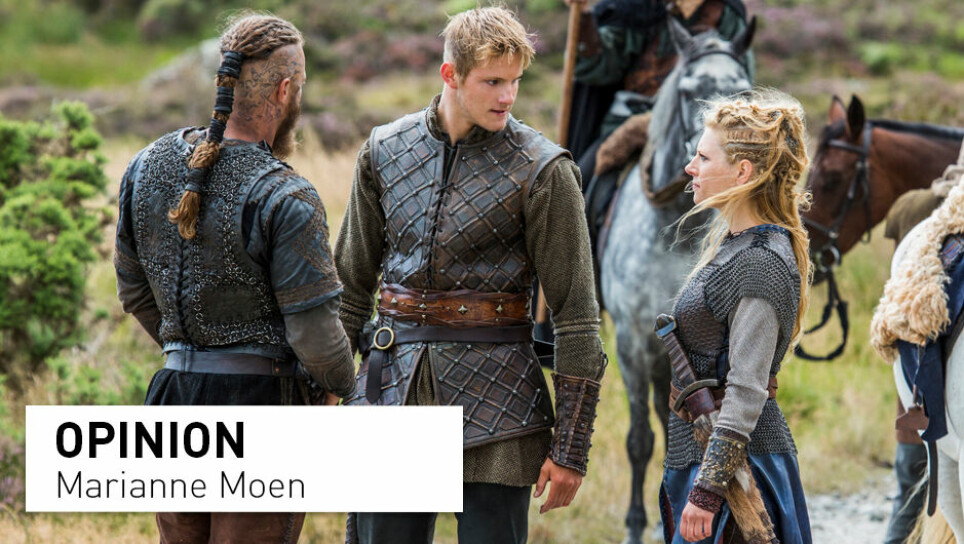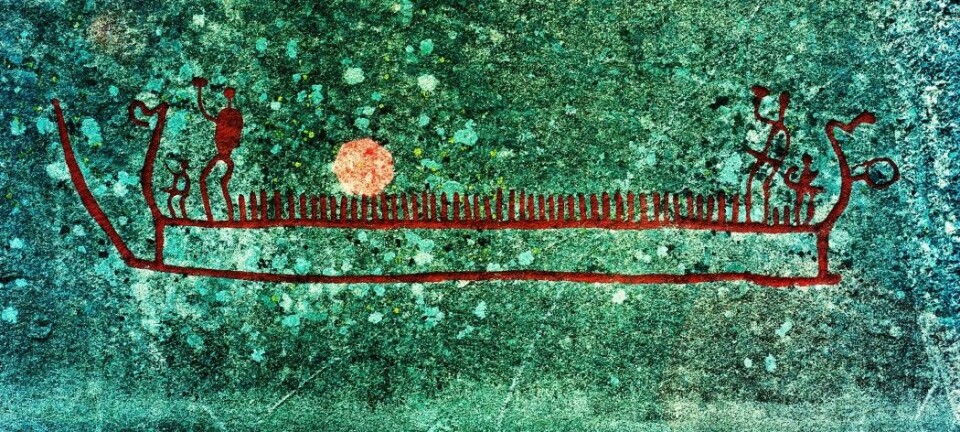Share your science:

Was there such a thing as a female Viking warrior?
OPINION: Are the changing answers to this question a direct result of our own changing views on gender?
Was there such a thing as a female Viking warrior? That question has come up at different times throughout academic research on the Viking Age, and brought with it varying degrees of debate. At the same time, it has roused different levels of public engagement at different times. This shifting interest is characteristic of research on a question that, when raised, never fails to raise debate and engage opinions.
In the research history on this topic, we can trace changing ideologies and beliefs about men, women, status and power. It is, in many ways, a debate which at its core is as much about what we believe men and women can and cannot do, as much as it is about knowing the Viking Age.
Today, both academic and public interest in the question of female Viking warriors remains high. In fact, this brief introduction to the topic coincides with the publication of the Viking Special Volume titled Viking Wars, edited by Frode Iversen and Karoline Kjesrud. The book is the result of a conference organised by the Centre for Viking Studies at the Museum of Cultural History in Oslo, and amongst the diverse approaches to war, violence and Vikings it brings together, it offers three separate chapters which all query the topic of women and war (see suggested reading, below), making it the obvious place to start for those wishing to read more about the subject.
The big question
Many readers of this article will be looking for an answer to the question of whether or not women really did fight in the Viking Age, and I am afraid they may be disappointed if they seek a definite solution here.
In truth, there are as many answers to that question as there are scholars to answer it, and anyone interested will find persuasive arguments both for and against. In the interest of full disclosure, I will offer my own assessment: I consider it likely. The extant evidence argues strongly in favour of the involvement of some women in war, and that some of these women were directly involved with violent acts.
There is no shortage of sources which can be argued to support the existence of female warriors, though nothing indicates this was a particularly common phenomenon. In recent years, the now famous weapons grave from Birka (Bj.581) has drawn much attention after it was revealed to contain a female body buried with high status weaponry (see original article here).
This is far from the only burial of a woman which contains weapons, though it is to date the only one whose sex is determined with a DNA analysis. It also stands apart in the impressive array of weapons it contains, as other cases tend to be more typically female graves with one or two weapons (axes and shields for instance) intermixed with other objects. Aside from burials, women with weapons are also found depicted on amulets, picture stones and tapestries from the period, and there are contemporary written sources describing women involved in battles and war. Altogether, I believe this supports the interpretation that some women could, and did, engage in war.
- RELATED Read about Marianne Moens research on Vikings in the story Viking men were buried with cooking gear
No academic consensus
However, as stated, there is nothing to suggest this was very common. Nor is any of the evidence I have mentioned here uncontested. Other schools of thought argue that the images are representations of mythical creatures, or that weapons in female graves must be read as gifts not possessions. Some even suggest that women in weapon graves may mean the grave originally contained a male body, though so far no evidence has been found to support this most cases.
A more reasonable objection is that we do not actually know whether weapons in a burial symbolised warrior status at all. However, as this is often taken as a matter of course in male graves and usually only questioned in female ones, it seems fair to suggest that weapons in any grave is likely to have symbolised the same thing, be that in a woman’s, or a man’s grave. All in all, the jury is still out on an academic consensus on this topic, but it remains a fascinating debate.
A debate with high stakes
The discourse of women and violence tends to change along with contemporary concerns, reflecting in part larger shifts in how women’s agency and right to independence and equality is viewed at any given time. Having said that, the study of women warriors is not straightforward, with valid concerns raised on a number of sides.
Some argue that seeking women warriors in the past is a cheap way of scoring points with new audiences by making women act as men, when the reality was probably more complex. The concern here is that by glorifying male roles over female, and presenting women as having importance only when they inhabited such roles, we may be overshadowing other ways in which women could be socially important.
Others argue that by restricting women in the past to the kind of roles we consider naturally affiliated with women today (nurturing and administrative roles), we are in fact projecting our own views of gender on to the past. In many ways, the debate around the topic of women Viking warriors is almost as interesting in itself as is the question of whether or not they existed.
Viking Women warriors and a past produced in the present
Recent years have seen a resurgence of interest in the topic of women warriors, attributable in part to the above-mentioned female weapons grave at Birka. However, we cannot give Birka all the credit for the recent interest: at least some of this must go to popular culture phenomena such as the History Channel’s big budget series Vikings, where women are frequently portrayed as warriors.
More than this, the interplay of popular culture with identity narratives inspired by cultural heritage, combined with a new audience seeking more fulfilling versions of the past than what has traditionally been of offer, has resulted in a public currently eager to embrace women as warriors. The nature of heritage narratives means they shift and change with the times to which they belong, because they are in essence about what the past means in any given cultural context. A new focus on women as doers, as fighters, army commanders and leaders, is in tune with a renewed cultural focus on women as capable and active.
I mention the construction of popular narratives of the Viking Age here, because at no point is knowledge about the past produced in a vacuum: instead it is produced within specific cultural circumstances, which inevitably influence what interpretations and what material we chose to foreground.
- RELATED: Why do we love the Vikings so much?
Concluding thoughts
Though we may be no closer to an academic consensus or a concrete answer than before, we are currently seeing lively academic interest in the topic. This aligns both with an engaged public, and with new and exciting scientific methods of enquiry which can potentially deliver ever more sophisticated results (such as aDNA results to gender weapon burials for instance).
The question at the heart of the research behind this article is an old one, but never irrelevant. Did the Viking Age know women warriors in real life? Or were they mythical motifs used as storytelling devices? Whichever side one lands on in this debate, I suggest the real question we ought to be asking is what does this mean for Viking Age society as we think we know it? Because either way, it will have impacted societal structures and norms in more ways than one.






























